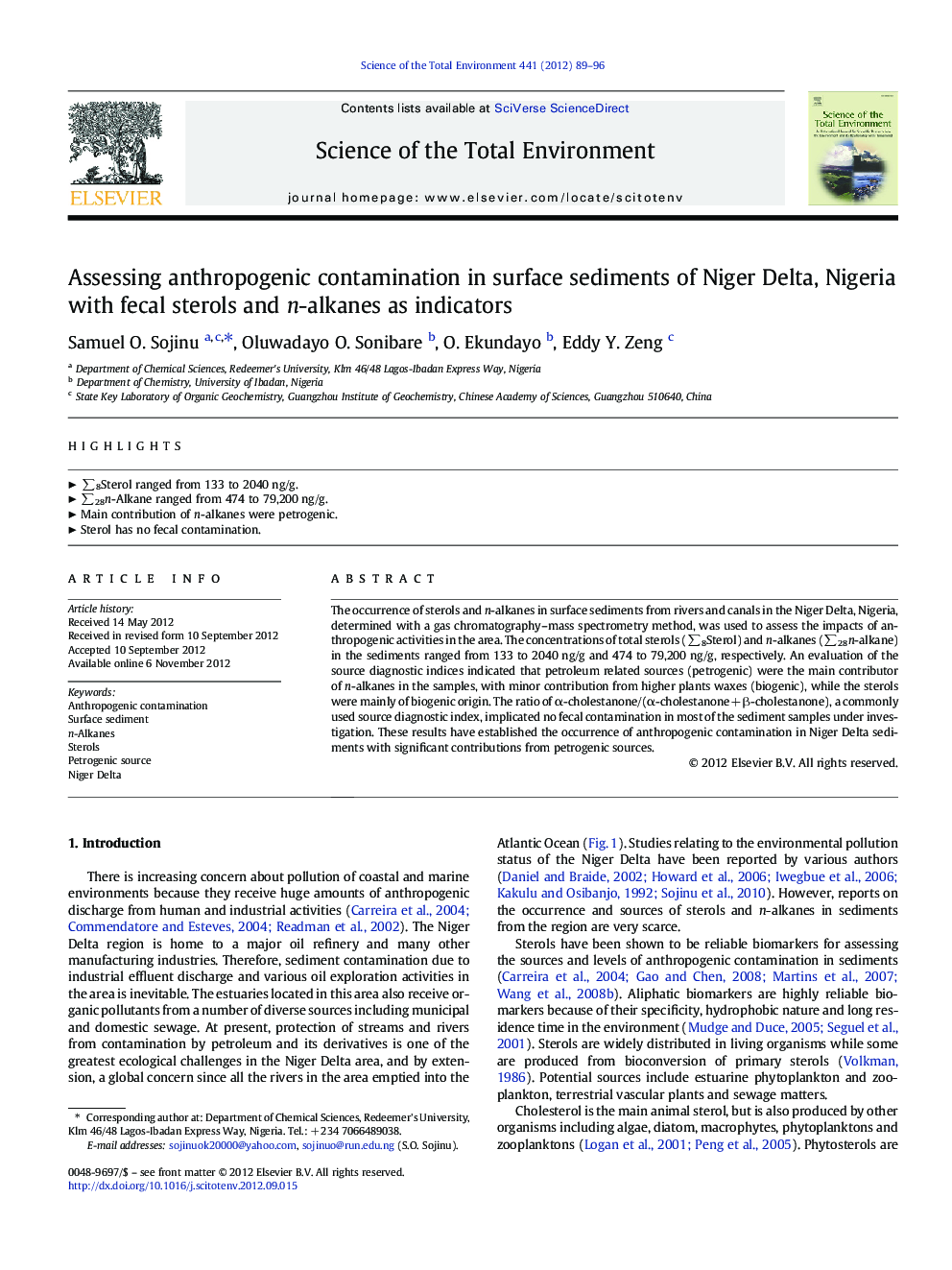| Article ID | Journal | Published Year | Pages | File Type |
|---|---|---|---|---|
| 4429149 | Science of The Total Environment | 2012 | 8 Pages |
The occurrence of sterols and n-alkanes in surface sediments from rivers and canals in the Niger Delta, Nigeria, determined with a gas chromatography–mass spectrometry method, was used to assess the impacts of anthropogenic activities in the area. The concentrations of total sterols (∑8Sterol) and n-alkanes (∑28n-alkane) in the sediments ranged from 133 to 2040 ng/g and 474 to 79,200 ng/g, respectively. An evaluation of the source diagnostic indices indicated that petroleum related sources (petrogenic) were the main contributor of n-alkanes in the samples, with minor contribution from higher plants waxes (biogenic), while the sterols were mainly of biogenic origin. The ratio of α-cholestanone/(α-cholestanone + β-cholestanone), a commonly used source diagnostic index, implicated no fecal contamination in most of the sediment samples under investigation. These results have established the occurrence of anthropogenic contamination in Niger Delta sediments with significant contributions from petrogenic sources.
► ∑8Sterol ranged from 133 to 2040 ng/g. ► ∑28n-Alkane ranged from 474 to 79,200 ng/g. ► Main contribution of n-alkanes were petrogenic. ► Sterol has no fecal contamination.
